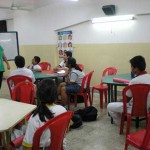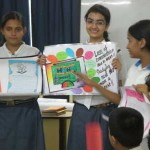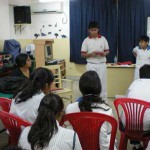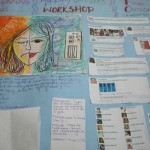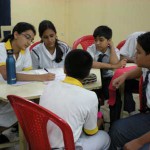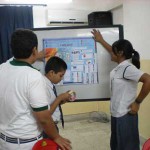The Peaceworks Mapping Communities project is an attempt to address apathy at the very basic level in the youth by understanding the nature of change, and what role the youth can play in our societies today, when their mindsets are still being former, and they tend to be financially and emotionally dependent on parents, their immediate peer groups and educational institutions. Some of our most fundamental attitudes toward political issues, engagement with the society at large and our belief in our ability to create an impact is formed while we are still in school, where our values are shaped by our education, through mass media, through our peers. It can be a transformative period, or one of isolated reality. Sumona Chakravorty conducted a month-long session at Lakshmipath Singhania Academy with 21 students of the 9th grade, taking them through various classroom activities using the art and craft, and discussions that encouraged out-of-box thinking. The focus was primarily on exposing the students to various types of changes needed in the world, and what are the various protest cultures that have emerged internationally to address the want for these changes. The students although from the same classes of a school realized how vastly different their belief systems are, and how different approaches can be taken towards issues that they consider important. But most importantly, the facilitator took them through a process where they learned to cooperate and work together: wanting social change is universal, but how we approach the issues may vary so there needs to be constant learning and reevaluating of our goals in context of the reality.
The students started by focussing on a very limited cause in terms of understanding “change” wanting “air conditioning” in their classes because they felt that the heat distracted them from their studies and affected their concentration levels. They centered their core campaigns on these issues, and made presentations on what their campaign was about. Some of them depended extensively on social networking as a tool for bringing awareness to their cause but the facilitator made them realize the short-comings of such a tool, and the value of group work and leadership. Because of the time constraints, the workshops suffered from a lack of depth and the time given to the participants to fully introspect, work on a plan and then analyze the results. The creation of ‘manifestos’ was again a very interesting exercise but carried out in a hurried manner because of the lack of time. The greatest achievement of the workshop was, as expressed by a student, that it instilled in the children a sense of keenness to engage with the outside community and the desire to go beyond the comfort levels of everyday life for achieving their goals. That barriers will always be there but the effort must always be constant.

